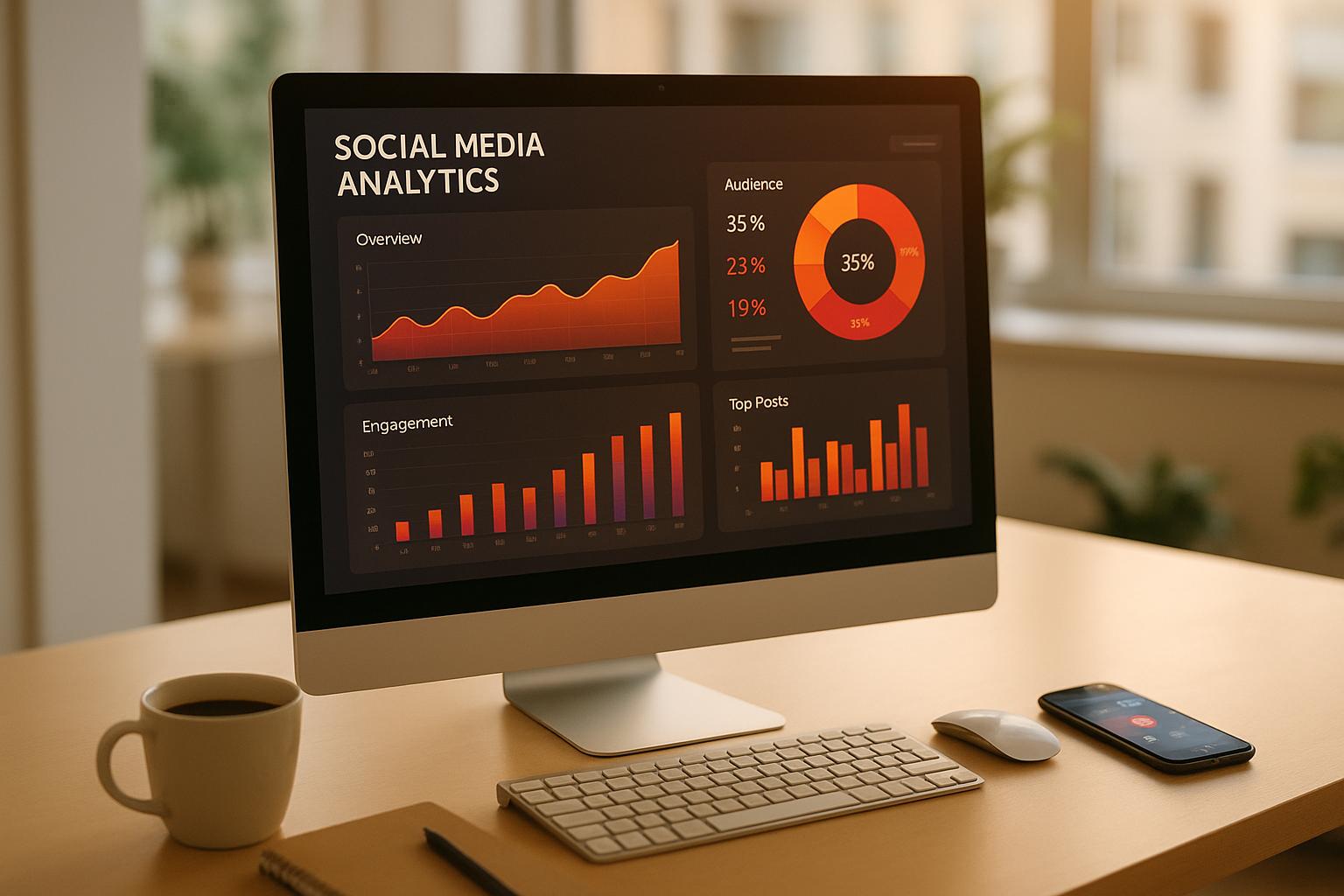Canonical tags help search engines understand which version of a page to prioritize when duplicate content exists. They prevent duplicate content issues, consolidate ranking signals, and improve crawl efficiency. Here's a quick summary:
- What They Are: An HTML tag (
rel=canonical) that points to the preferred URL. - Why They Matter: They combine link equity, minimize duplicate content problems, and optimize crawling.
- When to Use: For duplicate pages (e.g., product variations, filtered content, syndicated articles).
- How to Implement: Add a self-referencing canonical tag in the
<head>section of your page using an absolute URL. - Common Mistakes: Avoid multiple tags, blocked page references, or inconsistent URL formats.
Quick Tip: Use tools like Google Search Console, Screaming Frog, or Yoast SEO to monitor and manage your canonical tags effectively.
Proper canonicalization keeps your SEO strategy on track and ensures your content gets the recognition it deserves.
SEO Best Practices for Canonical URLs + the Rel=Canonical Tag
Setting Up Canonical Tags
Adding canonical tags correctly in your HTML is crucial for search engines to understand your content and avoid duplication issues.
HTML Code for Canonical Tags
Canonical tags should be placed in the <head> section of your webpage's HTML. Here's how it should look:
<link rel="canonical" href="https://www.example.com/your-page/" />
Always use absolute URLs (include https:// and your domain). Google Search Central emphasizes that absolute URLs are necessary for proper canonicalization.
Correct Tag Format
To ensure canonical tags work as intended, stick to these formatting rules:
| Element | Correct Format |
|---|---|
| Protocol | https:// or http:// |
| Domain | www.example.com |
| Case | Use lowercase URLs |
| Structure | One canonical per page |
Avoid errors like skipping the protocol or using relative URLs (e.g., /page/).
"Google says not to use relative URLs (e.g.,
/sample-page/), even though they're supported. This means you should specify full absolute URLs in canonical tags (e.g.,https://example.com/sample-page/)."
Once your tags are set up, monitoring them with the right tools is the next step.
Tools for Canonical Tag Management
After implementing canonical tags, use reliable tools to verify and manage them. These tools can help you spot problems early and keep your SEO efforts on track.
| Tool Name | Primary Function | Best For |
|---|---|---|
| Yoast SEO | Automatically generates tags | WordPress sites |
| Google Search Console | Verifies canonical tags | All websites |
| Screaming Frog | Audits canonical tags | Technical SEO teams |
For instance, Yoast SEO simplifies the process by automatically adding canonical tags to your pages and templates, minimizing the risk of errors.
"A canonical tag is an HTML element that helps webmasters prevent duplicate content issues, by specifying the 'canonical' or 'preferred' version of a web page." - Google Search Central
Canonical Tag Guidelines
To make the most out of canonical tags, it's important to set them up properly and follow best practices.
Self-Referencing Tags
Every page on your site should include a self-referencing canonical tag, even if duplicate content isn’t an issue. These tags point to the page’s own URL and serve key purposes:
- They protect SEO value when content is republished elsewhere.
- They resolve URL variations (e.g., case sensitivity, www vs. non-www).
- They prevent potential duplicate content problems during future site updates.
"Google recommends putting self‐referential canonical tags on all pages." - John Mueller, Google
Most modern CMS platforms automatically add self-referencing canonical tags. If you’re using a custom CMS, you’ll need to manually insert these tags into your HTML.
Direct Canonical Links
For canonical tags to work properly, they need to be clear and direct. Here are some tips:
- Use absolute URLs, including the protocol (e.g.,
https://). - Always point to the final, canonical version of the URL.
- Place the tags directly in the HTML of each page.
- Ensure your URL formats are consistent across the site.
Avoid these common mistakes:
- Creating circular references (e.g., Page A → Page B → Page A).
- Using chained canonical tags (e.g., A → B → C).
- Combining canonical tags with redirects.
- Pointing canonical tags to pages marked as "noindex."
Tags for Multi-Page Content
Handling canonical tags for multi-page content depends on whether you have a "View All" page.
-
Without a "View All" Page
Each paginated page should have its own self-referencing canonical tag. For example:- Page 1:
<link rel="canonical" href="https://example.com/shop/" /> - Page 2:
<link rel="canonical" href="https://example.com/shop/?page=2" />
- Page 1:
-
With a "View All" Page
In this case, all paginated pages should point to the "View All" page, which should also include a self-referencing canonical tag.
"We don't treat pagination differently. We treat them as normal pages." - John Mueller, Google Webmaster
sbb-itb-5be333f
Common Canonical Tag Errors
Incorrect use of canonical tags can seriously hurt your SEO. Below are some common mistakes and how you can fix them.
Multiple Tags Per Page
Having more than one canonical tag on a page can confuse search engines. This could lead to:
- Ignoring all canonical tags on the page
- Picking a canonical URL at random, which might not be the one you intended
"Google will ignore all declared canonicals if you declare more than one."
This often happens when both your CMS and manual changes add canonical tags. To resolve this:
- Check your page's HTML source code for duplicate
<link rel="canonical" />tags - Remove any extra tags
- Adjust your CMS settings or templates to ensure only one canonical tag is generated per page
After fixing this, ensure the canonical URLs you’ve set are accessible to avoid further issues.
Blocked Page References
Pointing canonical tags to pages that are inaccessible can confuse search engines and hurt your rankings. A clear and accessible canonical link is crucial for proper indexing.
Common accessibility issues include:
- URLs blocked by
robots.txt - Pages marked with "noindex"
- URLs returning non-200 status codes
- Pages requiring login credentials
"Search engines may avoid a canonical tag or interpret it incorrectly if you send mixed signals." - Moz
To fix this:
- Make sure all canonical URLs return a 200 status code
- Ensure canonicalized pages are indexable
- Remove any crawl restrictions on canonical destinations
- Confirm that canonical URLs are publicly accessible
URL Format Mistakes
Even if your tags are set up properly and pages are accessible, URL formatting errors can still cause problems. Here’s a quick guide to common URL mistakes and how to fix them:
| Error | Example | Correct Format |
|---|---|---|
| Relative URLs | /page |
https://example.com/page |
| Mixed protocols | http://example.com |
https://example.com |
| Inconsistent slashes | example.com/page vs example.com/page/ |
Stick to one format |
| Inconsistent casing | example.com/Page vs example.com/page |
Use lowercase URLs |
| WWW inconsistency | Both www and non-www versions | Standardize on one version |
These errors can make it unclear which version of a page is the canonical one. Always use absolute URLs and ensure consistency across your site to avoid confusion.
Checking Canonical Tag Performance
Keep an eye on your canonical tags to ensure they’re working as intended to improve your SEO efforts.
Google Search Console Insights

Head to the Indexing > Pages report in Google Search Console to check how your canonical tags are being handled:
- Alternate page with proper canonical tag: This means Google is correctly following your canonical tag and ignoring the non-canonical version.
- Duplicate without user-selected canonical: Indicates where you need to specify a canonical tag for duplicate content.
- Duplicate, Google chose different canonical: Suggests Google has chosen a different canonical URL than the one you specified.
After this, analyze key ranking metrics to assess how well your canonical tags are performing.
Search Ranking Metrics to Track
Canonical tags help direct ranking signals to your preferred URLs, boosting their visibility in search results. Keep an eye on these metrics to evaluate their impact:
| Metric | What to Watch | Likely Outcome |
|---|---|---|
| Impressions | How often your page appears in search | More visibility for canonical URLs |
| Click-through rate | User engagement with your page | Higher CTR on consolidated pages |
| Keyword rankings | Position of target keywords | Better rankings for your main terms |
| Indexed pages | Number of URLs indexed | Fewer duplicates in the index |
"Canonicalization is a vital component of a comprehensive SEO strategy." - Moz
Identifying and Fixing Issues
Regular audits are key to keeping your canonical tags in shape.
1. Technical Checks
Use tools like Screaming Frog to find duplicate content, canonical chains, or incorrect sitemap references. Make sure mobile and AMP pages point to desktop canonicals and return proper 200 status codes.
2. Syndicated Content Monitoring
For content shared across multiple platforms:
- Confirm syndication partners include canonical tags.
- Ensure those tags point back to your original content.
- Check the indexing status of syndicated pages.
Fix any problems as soon as possible to maintain optimal performance.
Top SEO Marketing Directory Resources

The Top SEO Marketing Directory is your go-to platform for finding reliable tools and expert services to manage canonical tags efficiently. It complements technical SEO guidelines by providing practical solutions for seamless implementation.
Directory Features
The directory offers a range of tools to help with canonical tag management and related tasks:
| Tool Category | Key Features | Benefits |
|---|---|---|
| Technical SEO Audit | Semrush Site Audit integration | Detects duplicate content and errors |
| Rank Tracking | SE Ranking's Rank Tracker | Tracks which pages Google prioritizes |
| CMS Integration | Yoast SEO plugin | Makes canonical URL setup easier |
These tools help consolidate link equity, monitor Google's recognition of tags, and identify technical issues.
Subscription Plans and Costs
The directory offers flexible subscription plans to suit businesses of all sizes:
| Plan Level | Monthly Cost | Features |
|---|---|---|
| Basic | Free | Access to basic listings and tool comparisons |
| Premium | $49 | Full access to advanced tools and agency listings |
| Enterprise | Custom pricing | Tailored solutions with comprehensive access |
Businesses typically invest in SEO services based on their size:
- Small Business: $1,500 - $3,000 per month
- Medium Business: $1,500 - $5,000 per month
- Enterprise: $5,000+ per month
These investments often cover full technical SEO services, including regular audits and optimizing your canonicalization practices.
Summary
Main Guidelines
Setting up canonical tags demands careful attention to detail. Google evaluates various signals to determine the preferred URL, so getting it right is crucial. Here's a quick overview of best practices:
| Best Practice | Implementation Detail | Impact |
|---|---|---|
| URL Format | Use absolute URLs with lowercase letters | Helps maintain consistent crawling and indexing |
| Self-Reference | Add self-referential tags on main pages | Clearly indicates the preferred URL to search engines |
| Cross-Domain | Canonicalize duplicate content across domains | Combines link equity effectively |
| Tag Monitoring | Audit regularly with Google Search Console | Avoids indexing problems and ranking declines |
"Using the canonical tag prevents problems caused by identical or 'duplicate' content appearing on multiple URLs." - Chima Mmeje, Moz
By following these steps, you can ensure your canonical tags work as intended.
Next Steps
Here’s what you should do next:
- Regular Monitoring: Keep an eye on issues through Google Search Console.
- Technical Audits: Use tools to identify problems such as:
- Multiple canonical tags on one page
- Non-indexable pages being referenced
- Incorrect canonical targets
- Missing canonical tags
- Performance Tracking: Check search rankings to confirm the impact of your canonicalization efforts on SEO.
For a more thorough approach to managing canonical tags, explore tools and services like those offered in the Top SEO Marketing Directory's Premium plan. These resources provide advanced technical SEO audits and expert support to help with implementation.


